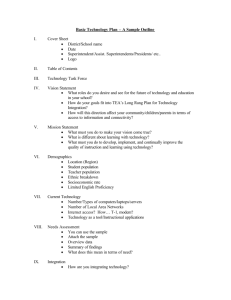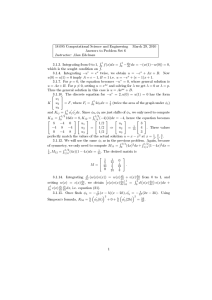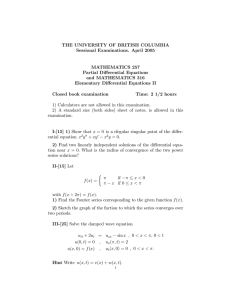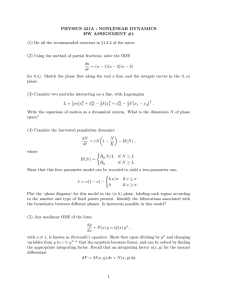THE INTEGRATING FACTOR TECHNIQUE First Order, Linear Differential Equations
advertisement
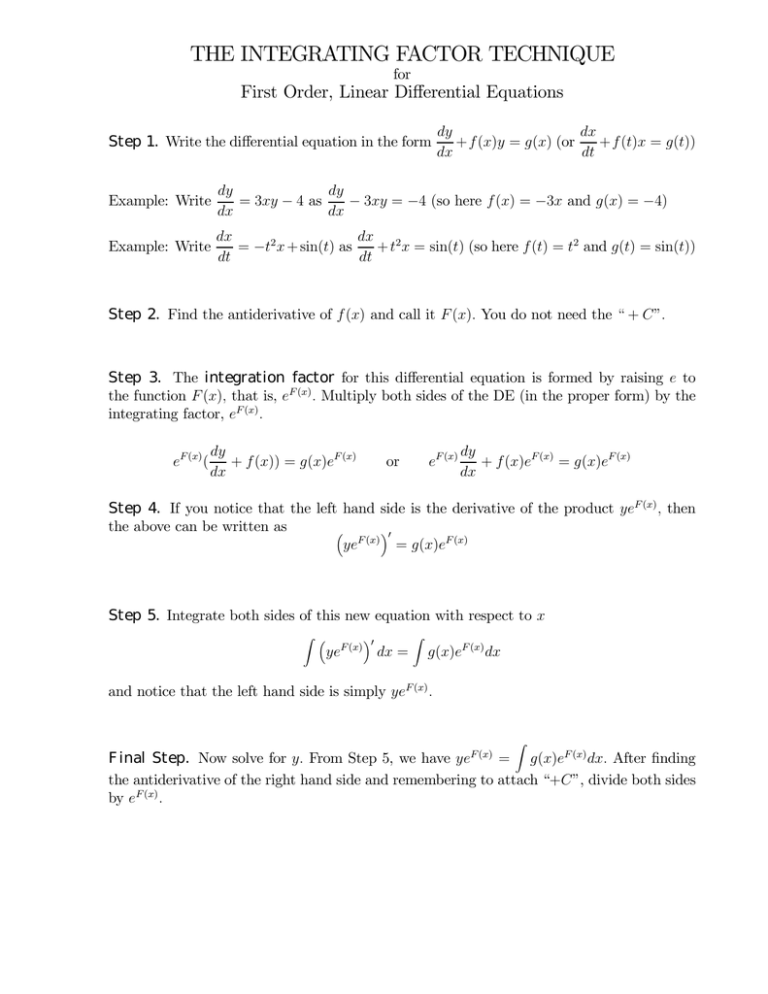
THE INTEGRATING FACTOR TECHNIQUE for First Order, Linear Differential Equations Step 1. Write the differential equation in the form dy dx +f (x)y = g(x) (or +f (t)x = g(t)) dx dt Example: Write dy dy = 3xy − 4 as − 3xy = −4 (so here f (x) = −3x and g(x) = −4) dx dx Example: Write dx dx 2 = −t2 x + sin(t) as + t x = sin(t) (so here f (t) = t2 and g(t) = sin(t)) dt dt Step 2. Find the antiderivative of f (x) and call it F (x). You do not need the “ + C”. Step 3. The integration factor for this differential equation is formed by raising e to the function F (x), that is, eF (x) . Multiply both sides of the DE (in the proper form) by the integrating factor, eF (x) . eF (x) ( dy + f (x)) = g(x)eF (x) dx eF (x) or dy + f(x)eF (x) = g(x)eF (x) dx Step 4. If you notice that the left hand side is the derivative of the product yeF (x) , then the above can be written as yeF (x) = g(x)eF (x) Step 5. Integrate both sides of this new equation with respect to x yeF (x) dx = g(x)eF (x) dx and notice that the left hand side is simply yeF (x) . F (x) Final Step. Now solve for y. From Step 5, we have ye = g(x)eF (x) dx. After Þnding the antiderivative of the right hand side and remembering to attach “+C”, divide both sides by eF (x) . EXAMPLES 1) Use the Integrating Factor Technique to solve dy dy = −3y + 4 or in standard form + 3y = 4 dx dx so f (x) = 3, F (x) = 3x and the integrating factor is e3x . Now multiply both sides of the standard form by the integrating factor. dy + 3y = 4e3x dx 3x e and notice that the left hand side can be written as a derivative. e3x y = 4e3x Now integrate both sides with respect to x and get 4 e3x y = e3x + C 3 So 4 + Ce−3x 3 which is be checked in this example by the separation of variables technique. y= 2) The second example is more difficult in the sense that the differential equation cannot be solved using separation of variables. So again, put in standard form and Þnd the integrating factor. dx x dx x = − + 4 or in standard form + =4 dt t dt t 1 so f (t) = , F (t) = ln(t) (we’ll assume that t > 0), and the integrating factor is eln(t) = t. t After multiplying both sides by the t, we have dx x t + dt t = 4t or (tx) = 4t. Integrating with respect to t gives tx = 2t2 + C and solving for x x = 2t + C . t


